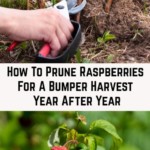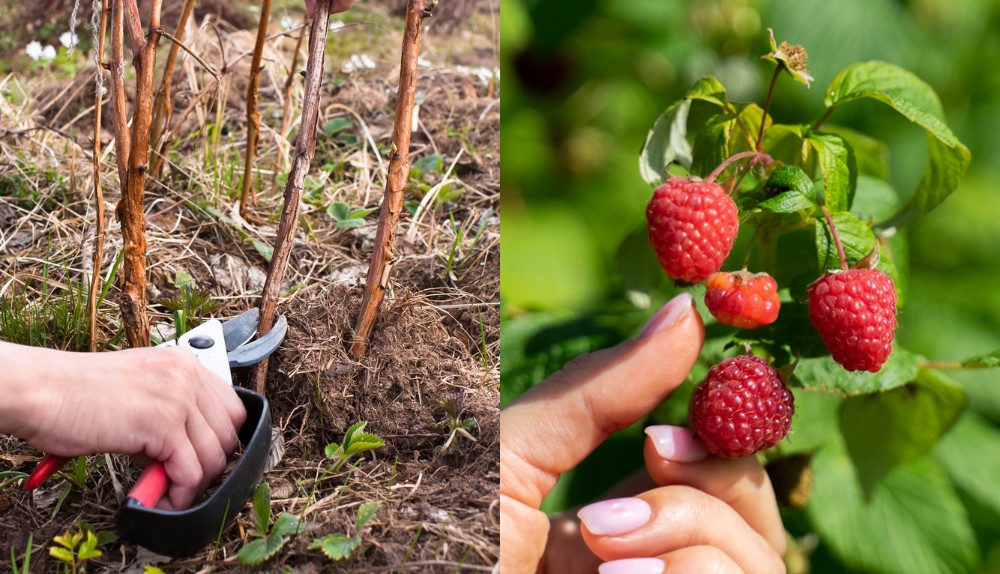
Raspberries are one of the most delicious berries to grow in your garden. A delicious perennial that will return year after year with proper pruning.
They are certainly a favourite for us.
On our property, we have a wide range of raspberries – wild and cultivated. We grow a number of different raspberries that give us fruit over the whole of summer and early fall.
If you already grow these fruit canes, you will know that learning how to prune raspberries is one of the key skills to learn.
Why it is Important to Prune Raspberries
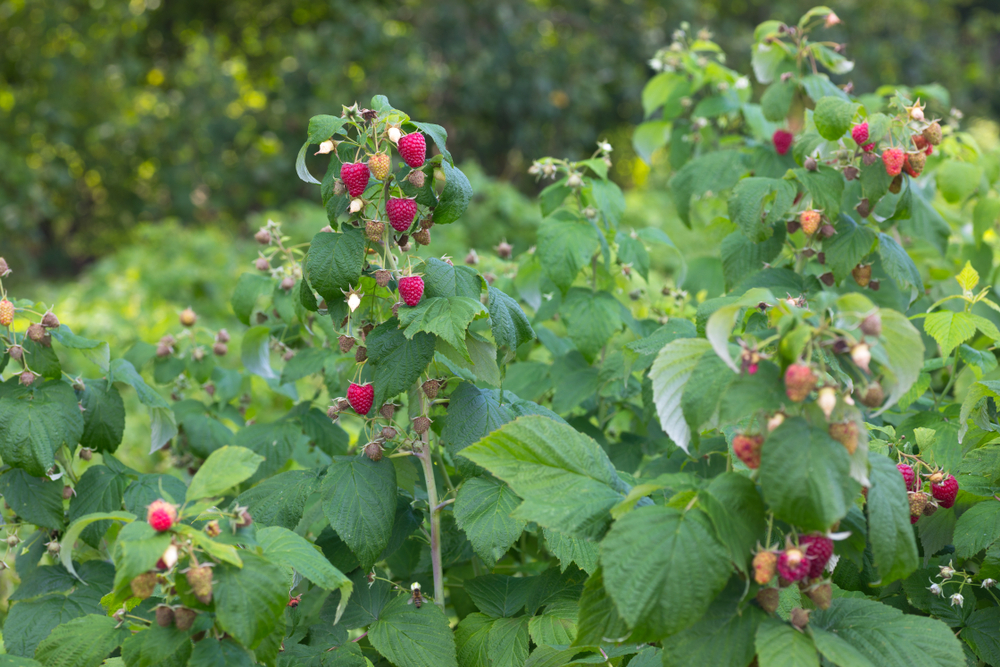
Raspberries that are not pruned will tend to reduce their fruit bearing capacity over time. They can also be more susceptible to pests and disease, and overcrowding can weaken the plants and reduce the yield of berries.
What is more, pruning raspberries can help to keep your garden looking neat and tidy. Dead and damaged canes are pruned out, which removes unsightly elements from the garden scheme. Suckers that pop up around the canes are pruned out to avoid them from spreading into surrounding growing areas.
Pruning can also allow you to reduce the height of your canes. This will make it easier for you to control the plants and harvest your crop.
Tools For Pruning
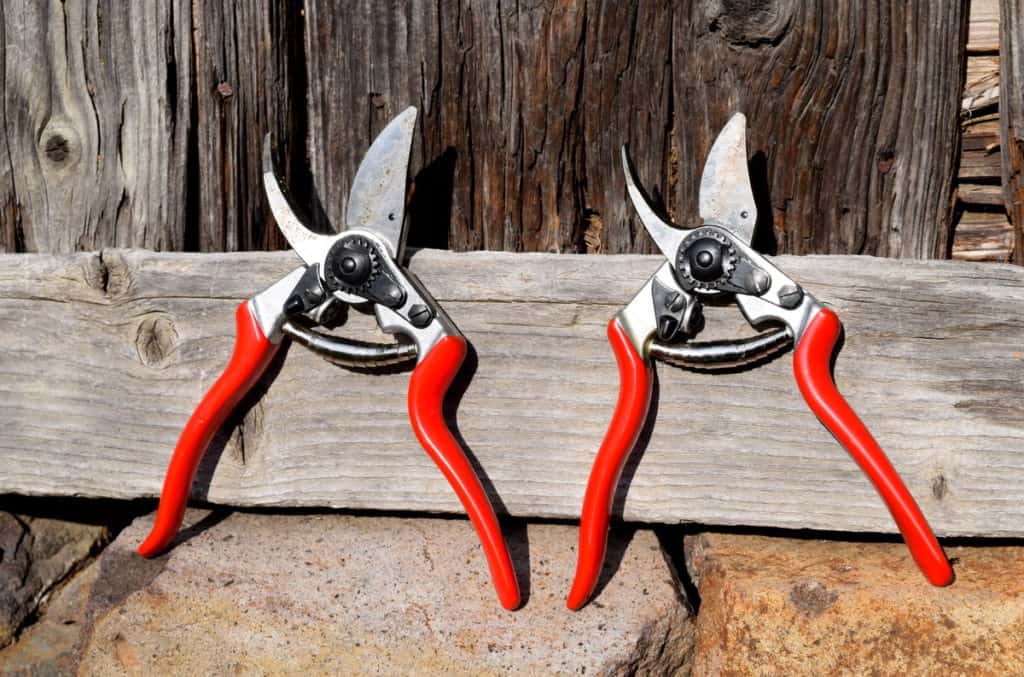
In order to carry out this garden job, you will require:
- Some garden pruners – the Felco F8 Pruners are our top pick.
You may also find it beneficial to have:
- A good pair of garden gloves to protect your hands from any thorns or spiky canes. We tested five of the most popular pair of gloves here and found that these leather work gloves were the best.
- A trowel or spade to dig up suckers that have popped up further away from the base of the canes.
Different Types of Raspberries
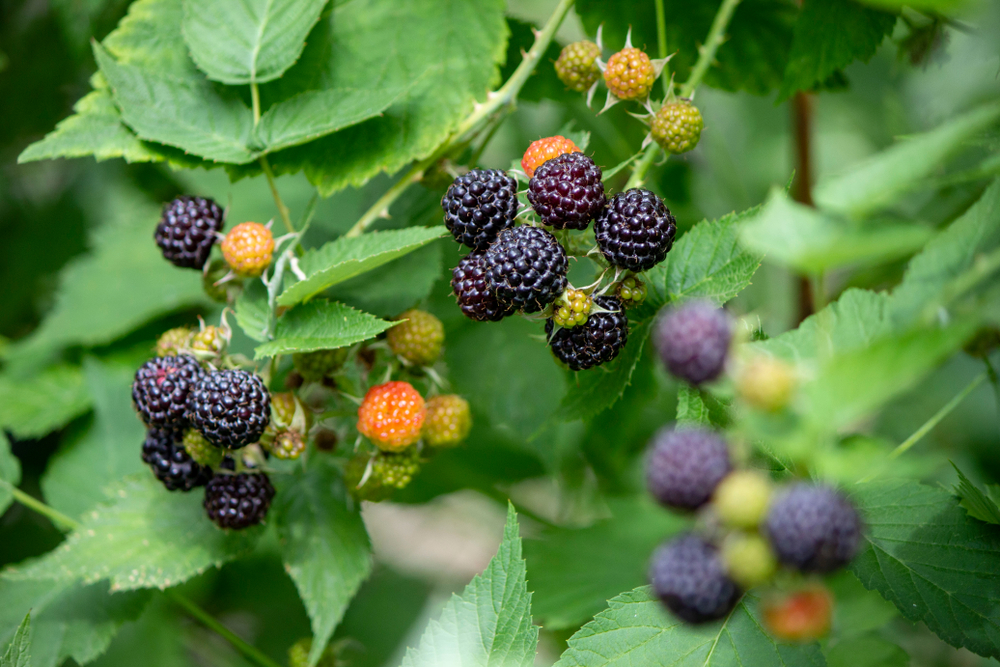
Before you prune your raspberries, it is important to determine which variety or varieties you have.
There are a wide range of different varieties, which differ in their requirements and characteristics.
In addition to the common red berries, you can also find black and golden raspberry varieties to grow.
(Black raspberries can be confused with blackberries. But unlike blackberries, black raspberries will come away from the central rasp, or white plug, at the centre of the berries when picked.)
No matter what colour the berries may be, raspberries are all members of the Rubus subgenus. All common varieties fall into two different categories.
- Mid-Summer fruiting raspberries (which bear fruit on floricanes – the previous season’s growth).
- Late summer/fall fruiting raspberries (which bear fruit on primocanes – the current season’s growth).
Different methods are required to prune raspberries of the two different types.
Pruning Summer Raspberries
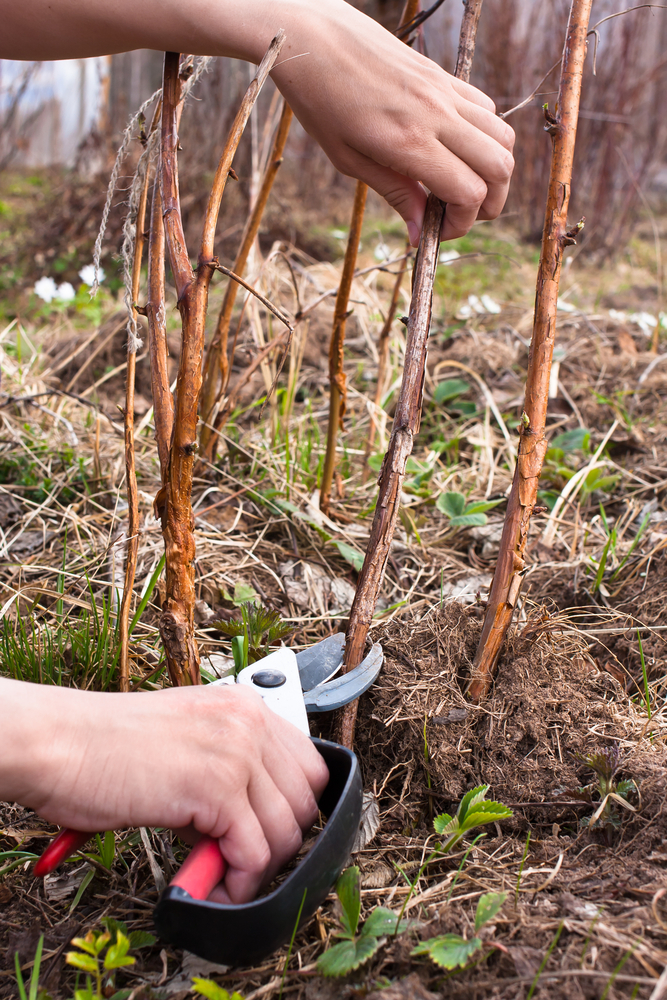
Prune summer fruiting raspberries in the late summer or fall, after the berries have been harvested.
Since these canes bear berries on second year growth, the aim is to prune out only those canes which have fruited this year (floricanes).
You will leave this season’s canes (primocanes) in place. These will turn into floricanes and fruit next year.
The only exception to this is where the raspberry patch has become too congested. If there are too many primocanes and they are too crowded, you may want to prune out some of these too.
(While floricanes are usually pruned after the harvest, primocanes are often thinned out in early spring.)
Do not be tempted to reduce the number of primocanes until the plants are at least three years old or vigour and yield may be reduced.
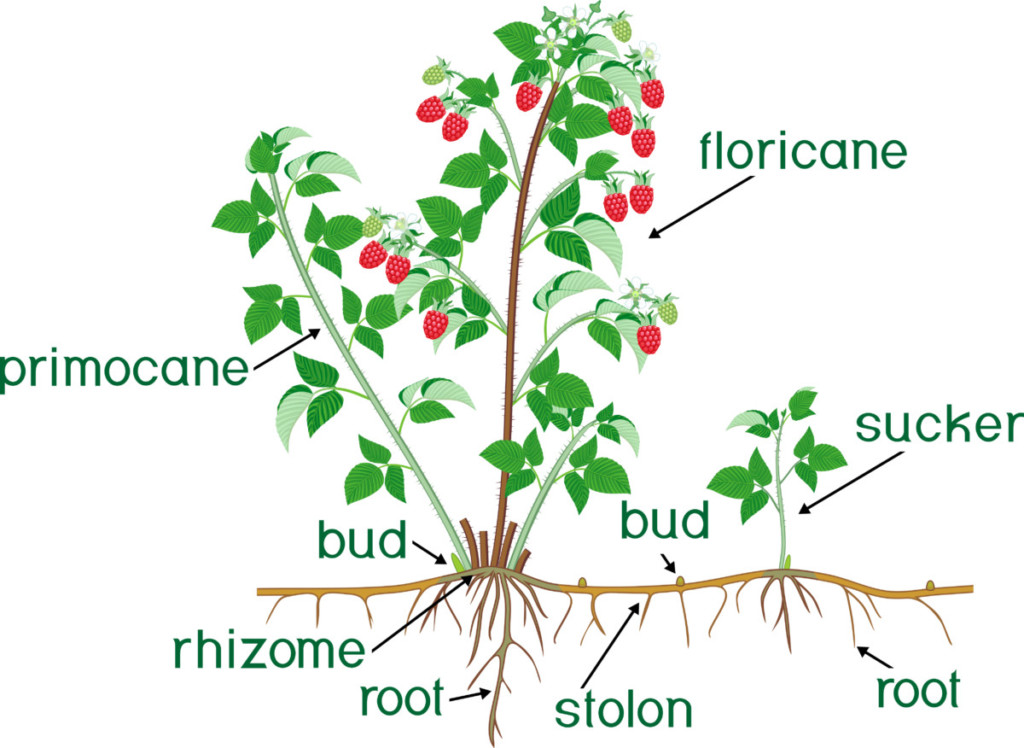
To prune summer-fruiting raspberries:
- Identify the floricanes that have fruited this year. (These are brown or grayish in colour, and harder and more brittle in texture, having died off after fruiting, while the primocanes of this season’s growth will look fresh and green.)
- Use shears or secateurs to cut the floricanes off at ground level, without leaving any stub.
- Take the strongest of the green primocanes and, if growing your raspberries within a support structure, tie them into your supports.
- Remove weaker or damaged primocanes (or primocanes that you wish to remove for thinning) by cutting these off at ground level too.
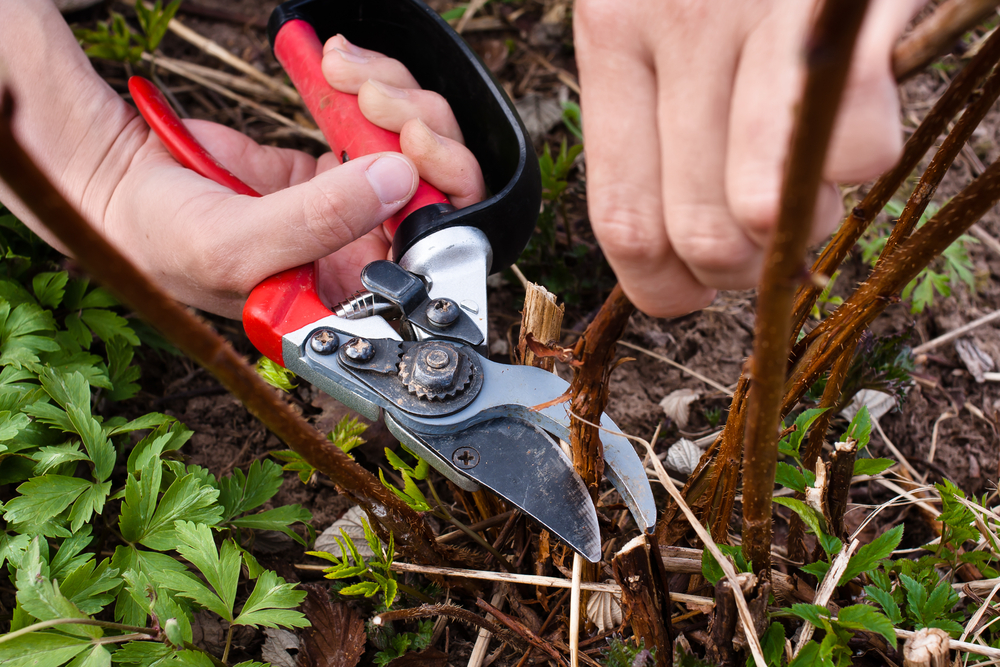
In late winter (around February), you may also wish to restrict the height of the longest primocanes to make harvesting easier. Trim off the tops of the longest canes to a height that you can reach.
In support structures, it is better to restrict growth to 10cm above the top support wire, or the peak of the support.
Pruning New Canes
If you are planting out newly purchased summer-fruiting raspberries this fall, or over the winter, it is important to determine whether or not these have been sold as ‘long canes’.
These long canes are year-old, ready to fruit canes (floricanes) and should not be pruned upon planting.
Pruning Late Summer/ Fall Raspberries
Raspberries that fruit in late summer/early fall on this season’s growth (primocanes) are best pruned in around February (late winter).
Pruning at this time will help to ensure that the plants have had time, over the dormant winter months, to store plenty of carbohydrates in their root systems.
When pruning these raspberry varieties, you have two choices. You can either:
- Cut all canes off at ground level. (Newly purchased canes of this type of raspberry should be pruned to within 25cm (10 inches) of the ground when planted, whenever this is done over the dormant period.)
- Or, aim for double cropping by selecting the strongest 6-8 canes per metre and leaving these canes at around 1m in height, and cutting off the rest of the canes at ground level.
Pruning for Double-Cropping
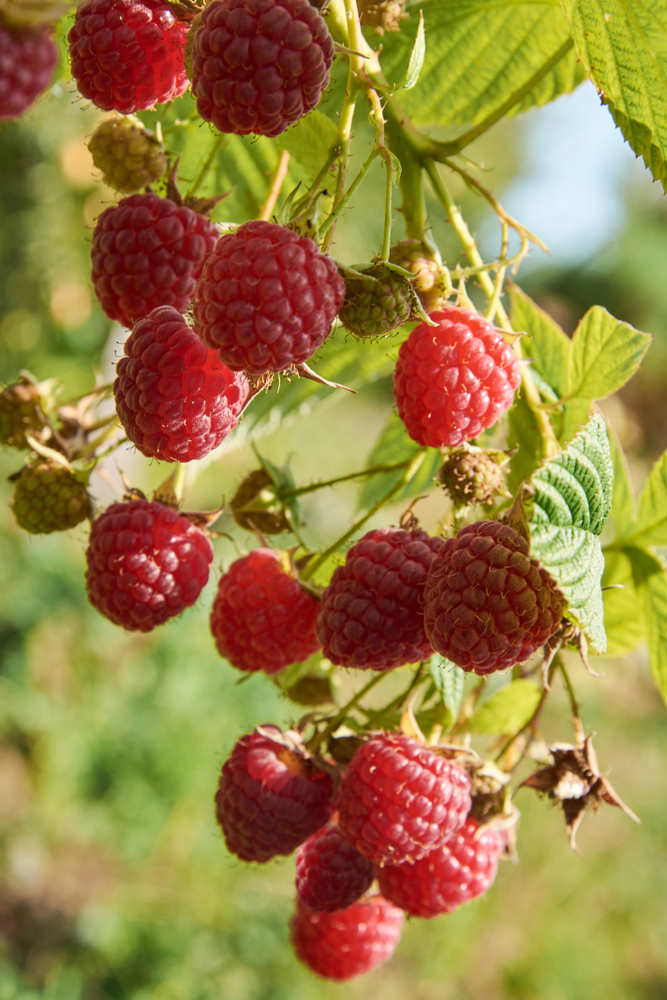
Choosing whether or not to aim for a double harvest will depend on a number of factors.
It is important to understand that only certain varieties are suitable for this treatment.
(Varieties such as ‘Autumn Treasure’, ‘Himbo Top’ and ‘Joan J’ are considered to be particularly well suited to double cropping.)
Double cropping can be useful for those with smaller gardens, who do not have space to grow both summer and fall varieties. If you do decide to aim for a double crop, you can achieve a small, but valuable earlier crop in addition to the main harvest.
However, it is generally considered to be the case that plants that bear only once, in late summer/ early fall produce higher quality berries. Yield will generally be higher if you are able to find the space to grow both mid-summer and late summer/fall bearing varieties (around 5% higher than when only the latter are grown).
If you do decide to aim for double cropping, the canes that were left at 1m height should be cut down to ground level immediately after they have finished fruiting in the summer.
Thinning Your Late-Summer/ Fall Raspberry Patch
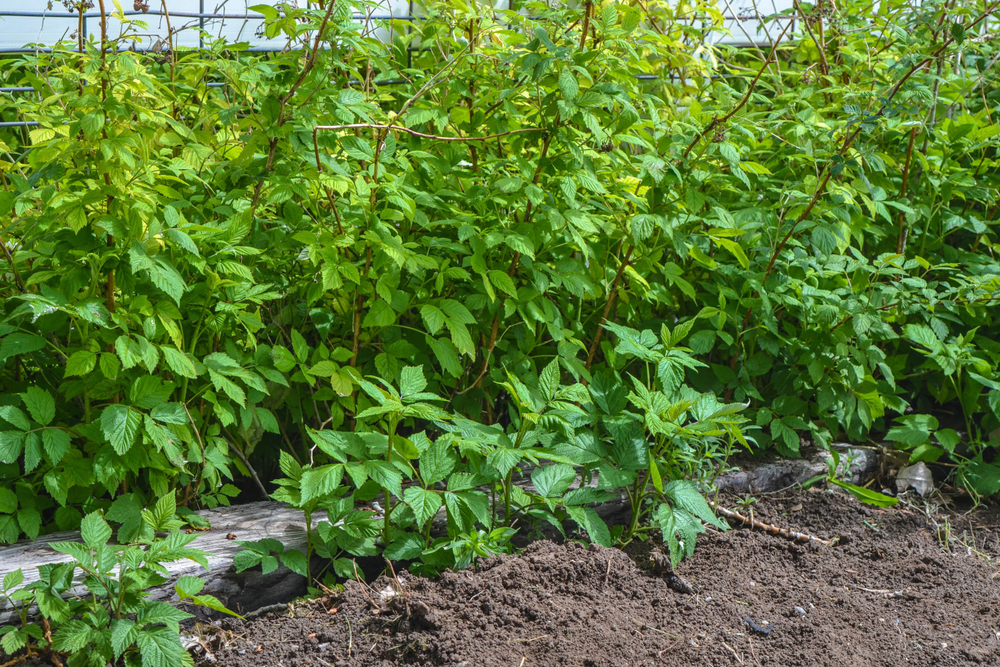
As with summer fruiting raspberries, you may also wish to reduce overcrowding in your patch.
Do this by thinning out excess canes in the summer. It is also a good idea to look out for any weedy, damaged or diseased canes and to remove these as soon as possible to prevent the spread of any problems.
Removing Raspberry Suckers
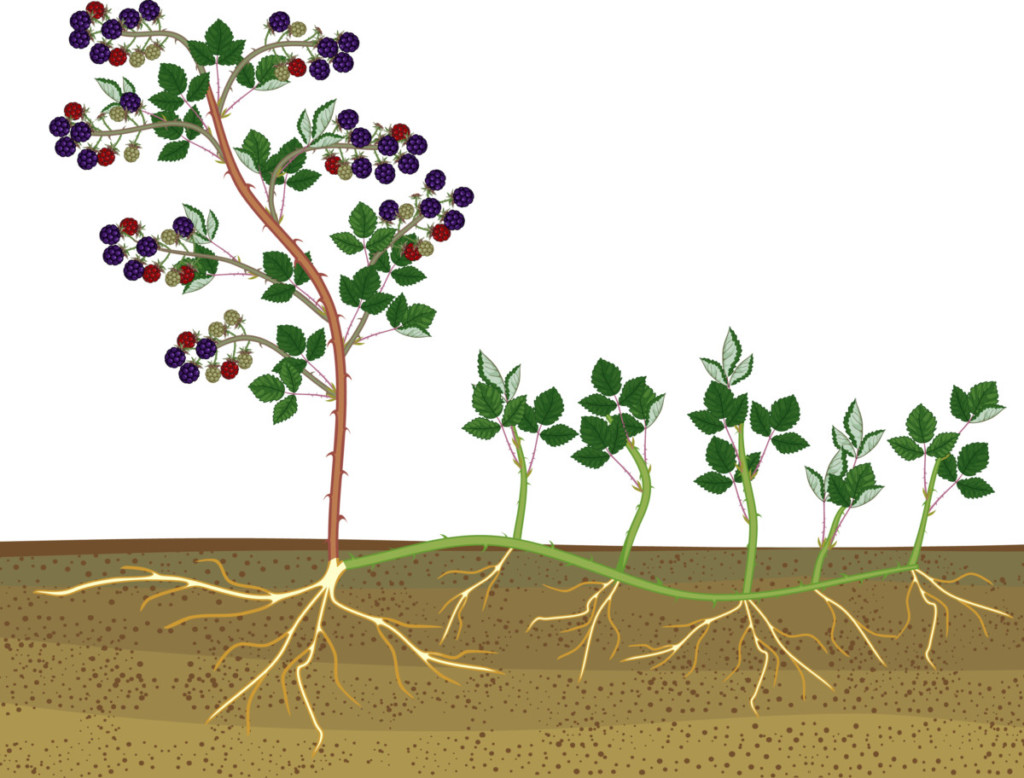
If your raspberry canes throw up suckers, you can remove these if required.
Often, suckers can cause overly congested conditions around the base of your primocanes and floricanes, between rows. If these are close to the base of the canes, it is best to remove them.
Cut them off at the base, at ground level. If you attempt to pull these out or dig them up, you can do damage to the plants’ root systems.
However, you may find that raspberry suckers also pop up at some distance from the main stand. In such instances, you can safely dig these out without doing damage to your main raspberry patch.
If the suckers are damaged, diseased or lack vigour, these should be discarded. If, however, they are healthy, they can be uprooted and planted elsewhere in your garden. (Or gifted to friends, family or others in your local community.) This work is best undertaken in early spring.
Replanting Raspberry Suckers
Suckers are an easy means of propagation and will grow into plants that are identical to the parent plant.
Replanting suckers can be a great way to increase your garden’s plant stock. To remove these from the parent plant, cut straight down into the soil between the parent and the sucker with a spade or trowel.
This will sever the connecting runner and roots. Loosen the soil and gently pull the sucker from the ground, trying to retain as much root system as possible.
If you plan to replant suckers elsewhere in your garden, prepare a new growing area. Make sure to add plenty of organic matter. Replant your suckers in their new growing location as quickly as possible. Take care to plant them at the same depth.
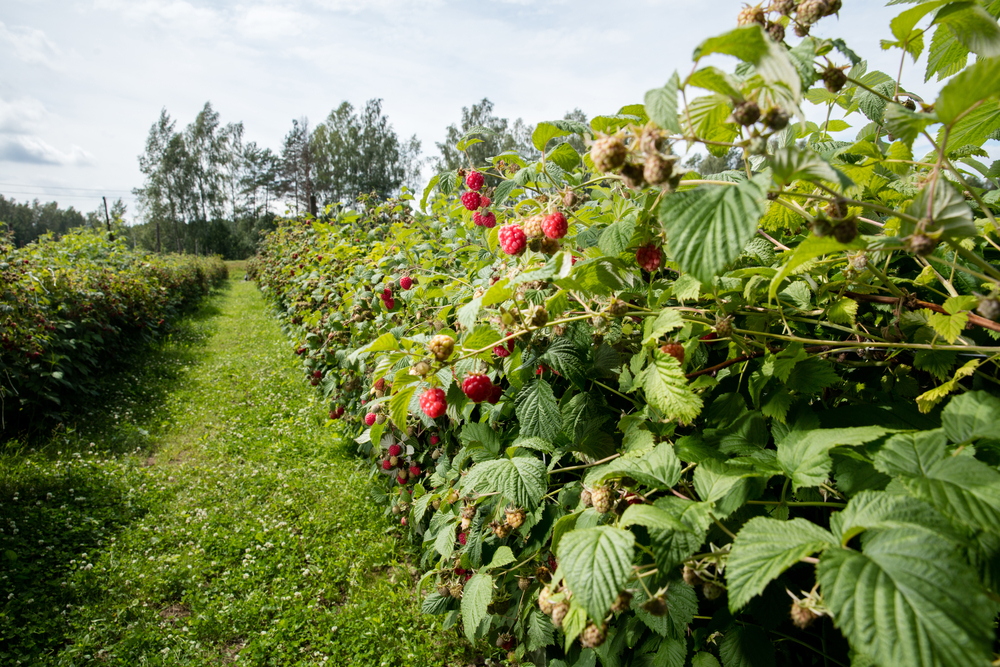
These new plants should be pruned back to around 2-5 inches (around 5- 12cm) above ground level to encourage new canes to form.
Pruning each year will allow you to maintain a healthy and productive raspberry plantation.
Sometimes, pruning may seem brutal. But pruning correctly will help to ensure that your plants are healthy, and will continue to produce their delicious yield for years to come.
Read Next: How To Plant Raspberry Canes For A High Yielding Berry Patch

Get the famous Rural Sprout newsletter delivered to your inbox.
Join the 50,000+ gardeners who get timely gardening tutorials, tips and tasks delivered direct to their inbox.


